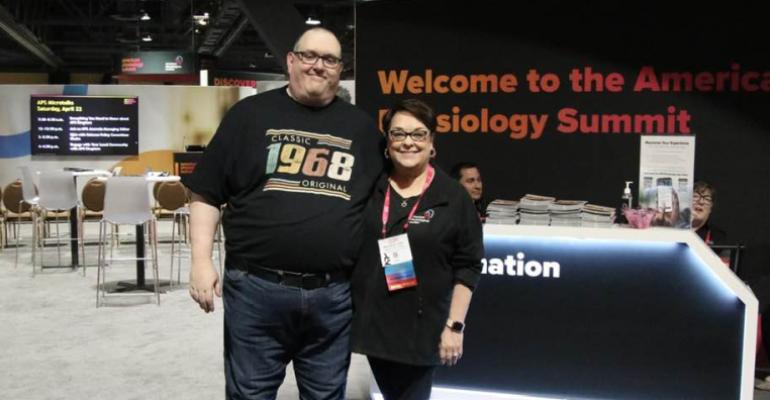MeetingsNet’s Changemakers list recognizes outstanding meeting professionals for their efforts to move their organizations and the industry forward in unique and positive ways. Find the full 2023 Changemakers list here.
Meeghan De Cagna, CAE, DES
Chief Community and Learning Officer
American Physiological Society
For her three-year effort to build a convention and trade show from scratch that would serve as the “professional homecoming” for members of a 135-year-old medical association
When a meetings team is tasked with overhauling part of an association’s annual convention and trade show, it’s no secret that it will involve a significant amount of work, especially while managing all the other aspects of the upcoming meeting.
But what would it be like if your planning team had to build every element of an annual meeting in just three years—and do it during a global pandemic that shut down the live-event industry, forcing the team to also produce virtual meetings in that time? Meeghan De Cagna, CAE, DES, chief community and learning officer for the American Physiological Society, can tell you firsthand: “It was a completely unheard-of thing” that she would not want to endure again.
Nonetheless, her and her team’s effort resulted in the successful launch of a 2023 event that’s now “the professional homecoming for our members,” rather than the Experimental Biology conference co-hosted by APS and four other medical societies for 25 years. Before the 2020 edition of EB, the societies decided that 2023 would be the first year that each would hold its own annual meeting instead. Unfortunately, the Covid pandemic struck just a few months after that decision, forcing De Cagna and her team to become proficient at conducting large-scale scientific meetings virtually for the next two years while having to build that in-person meeting.
De Cagna says the toughest part of creating a convention and trade show from the ground up was vetting and implementing seven or eight different technology systems. “We needed platforms for registration, housing, abstract management, speaker management, the rewards program, and a few other items—and we had to launch a mobile app,” she notes. “We were doing all of these things simultaneously, so we needed an incredibly strong internal IT team as well as smart planners and a trusted vendor team. Fortunately, we have all of those.”
Specifically, there were nine working groups, each handling one element of the new meeting. So, while “I met with each group leader regularly and had my eye on everything, I was able to get more heavily involved in the scientific programming, including the building of what we call the Physio Hub,” says De Cagna. Essentially a very interactive exhibit-hall setup, the hub features four content stages plus various informal gathering areas threaded among the exhibit booth—including “a bunch of photograph-friendly spots so we could ramp up the social-media activity,” which more than tripled this year.
Other elements of the Physio Hub: a research-poster area that provides refreshments to researchers as they engage presenters and each other; a career-development series that helps members understand their job possibilities outside academia; and a young-scientist program “that makes newcomers to the field feel welcome right away,” says De Cagna.
How did the hub go over? “It was rocking all four days,” she notes. “People flocked to the lounge areas and open spaces between stage sessions and poster sessions. It was a joyous environment for people to connect; it became the heart of our meeting.” APS member attendance topped 3,000, just as it had for the final Experimental Biology joint meeting held before the pandemic. What’s more, De Cagna thinks that “we can get this meeting to 4,500 attendees in the next several years.”
“When I stop to think about what we’ve done, I’m kind of amazed by it,” she says. “But it really helps to know your members’ needs and desires, and to have incredibly talented people who you can allow to just do their thing.”
De Cagna’s advice for other planners who might have to take on such a huge initiative: “Tell the team there can be no surprises. I don’t have to know all the details, but I don’t want to be surprised by something down the line. Give me the good news and the bad news so we can help each other in removing barriers and seizing opportunities.”
Oh yeah, and this: “Spend what you must to hire the best people you can,” De Cagna says. “It will absolutely be worth it.”





